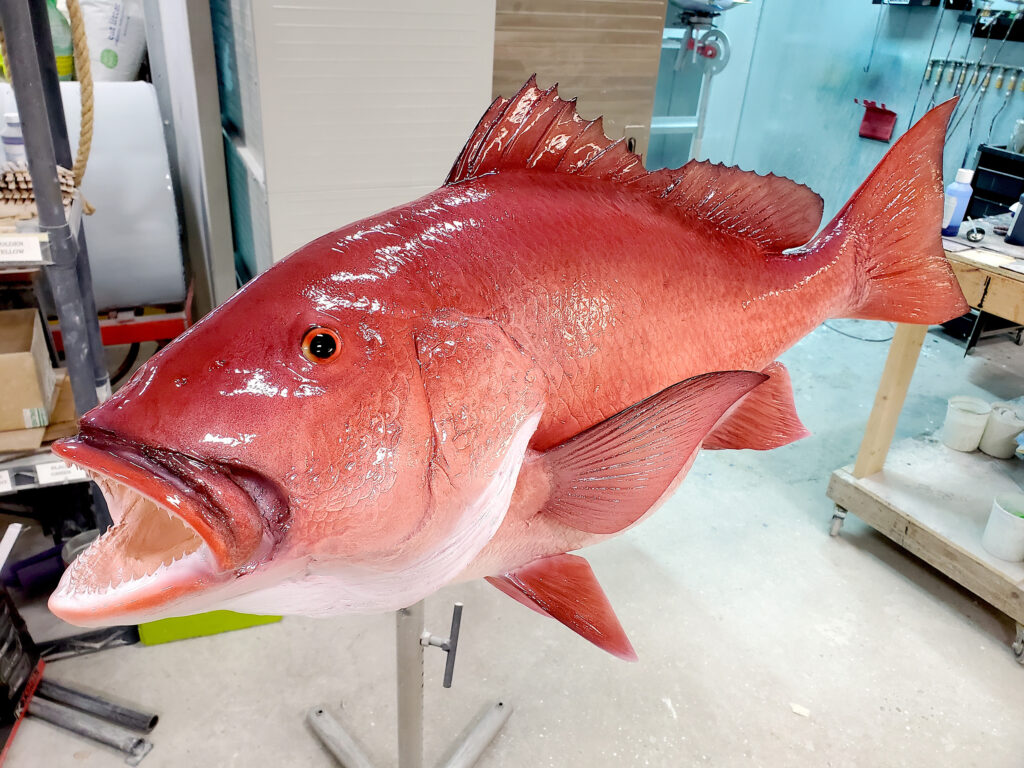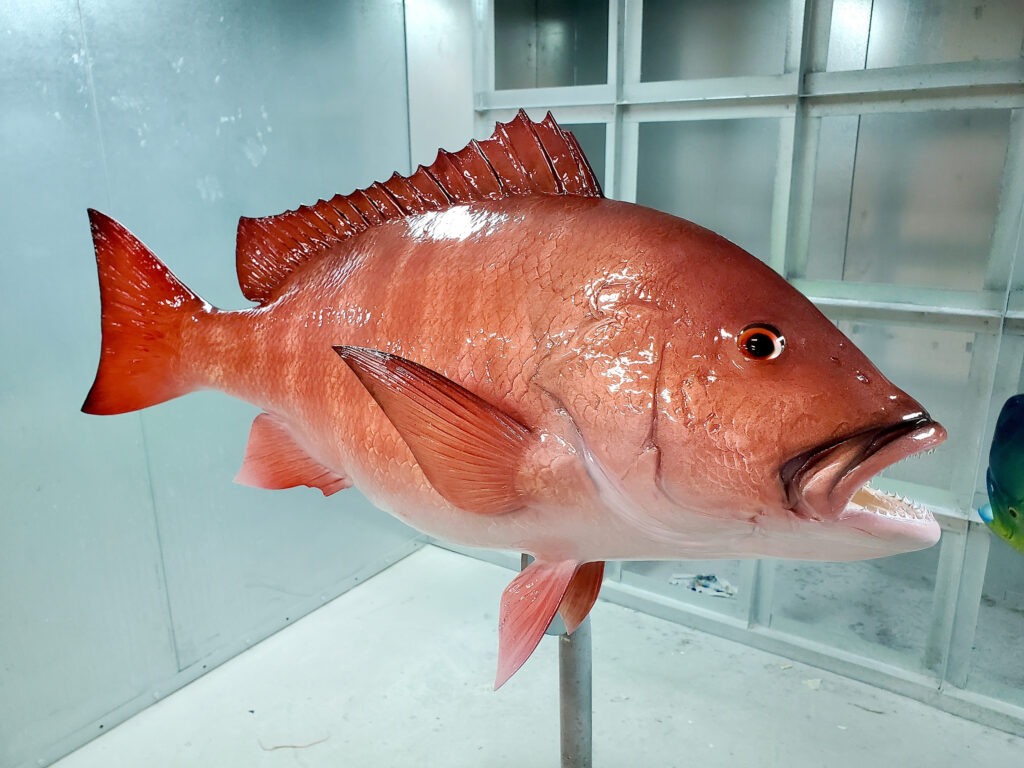NORTHERN RED SNAPPER
Lutjanus campechanus
The name Red Snapper is used for both Northern red snapper (Lutjanus campechanus) and Southern red snapper (Lutjanus purpureus). Northern red snappers are found in the Gulf of Mexico and in the Atlantic Ocean.
The northern red snapper is native to the western Atlantic Ocean, the Caribbean Sea, and the Gulf of Mexico. Adults can be found living among reefs and man-made wrecks. They form large schools and when you catch them, you will notice that the schools are usually made up of fish of all the same size.
The body of a northern red snapper is very similar to other snappers such as the mutton, lane, dog tooth, and mangrove snapper. They all have large scales, a sloped head, and a stocky body. You can distinguish a northern red snapper by its beautiful red colors and tiny, sharp teeth. They lack the pronounced canine teeth found in the dog tooth snapper.
Their habitat changes as they develop. When they are young, they spread out over large, benthic areas where they are safer from predators. As they grow and begin to hunt more, they move to areas where reefs begin to develop, such as oyster beds. Once they reach roughly one year in age, they begin to look for more cover and food in more advanced reefs and man-made structures such as oil platforms and wrecks at the bottom of the ocean.
When you find a school of northern red snapper, the smaller fish will be higher up in the water column at the top of the school, whereas the larger ones will protect their territory near the bottom. There is a pecking order amongst them and those that are bigger get first dibs on where to live.




